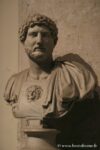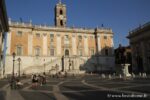 The Capitoline Museums that occupy the Palace of the homonymous square house a unique collection of Greek and Roman antiquities and an art gallery exhibiting paintings of masters.
The Capitoline Museums that occupy the Palace of the homonymous square house a unique collection of Greek and Roman antiquities and an art gallery exhibiting paintings of masters. The Capitoline Museums that occupy the Palace of the homonymous square house a unique collection of Greek and Roman antiquities and an art gallery exhibiting paintings of masters.
The Capitoline Museums that occupy the Palace of the homonymous square house a unique collection of Greek and Roman antiquities and an art gallery exhibiting paintings of masters.










Recents comments